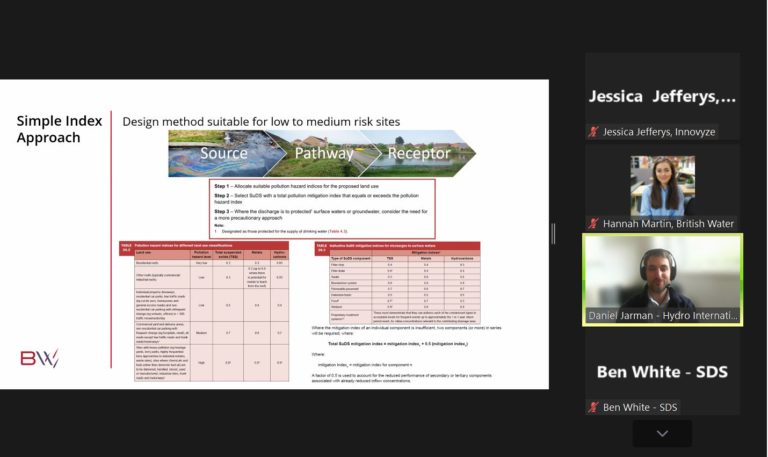Guide ’Plugs the Gaps’ in SuDS Manual

Guide ’plugs the gaps’ in SuDS manual. (Image source: British Water)
“The How to Guide is intended to plug the gaps in the CIRIA SuDS manual to allow practitioners to use proprietary treatment systems with the simple index approach, and effectively design them into SuDS treatment trends,” said Daniel Jarman, group technology manager at Hydro International and one of the guide’s authors.
“The Guide itself provides a common basis for the evaluation and selection of subcomponents and brings manufactured treatment systems onto a level playing field with those already presented in the [CIRIA] SuDS manual.”
SuDS can deliver a wide range of environmental benefits and the manual from CIRIA - construction industry research & information association - is recognised as the most comprehensive SuDS guidance available in the UK. It focuses on providing cost-effective planning, design, construction, operation, and maintenance of SuDS and a revised version was published in November 2021.
British Water’s How to Guide provides:
- A comparison of the prevalent test protocols
- Design examples for manufactured SuDS
- Derivation of mitigation indices for proprietary systems
- Comparisons with field data
- Advice on applying mitigation indices to a range of products
The How to Guide has been introduced alongside the British Water code of practice: Assessment of Manufactured Treatment Devices Designed to Treat Surface Water Runoff, which was launched in 2016. When used in combination, the documents are intended to help users arrive at a full set of pollution mitigation indexes. Both British Water documents have been reviewed by CIRIA.
Introducing the webinar was another of the British Water How to Guide’s authors Jessica Jefferys, product manager at Innovyze. Daniel Jarman then took participants through the aims, objectives, purpose and use of the guide and explored how proprietary stormwater treatment devices can be used with the simple index approach.
After this, Jo Bradley from Stormwater Shepherds provided insight on the practical application of the Guide and how it can be used in relation to different types of sub-structures and proprietary devices. There was also and a panel Q&A with Jarman, Bradley and co-author David Smoker, technical director at ACO Water Management.
Participants praised the event for being thorough and instructive.
“It was a very enjoyable presentation with lots learned. The presenters came across very well and kept the topic interesting and informative,” commented James Sereda-Barsby, associate director of civil engineering at Pick Everard.
British Water’s How to Guide: Applying the CIRIA SuDS manual (c753) simple index approach to proprietary/manufacturers stormwater treatment devices is relevant for a wide range of professions and roles, from manufacturers to designers and local authorities or other approving bodies looking to understand and scrutinise the design and selection processes for SuDS.
Source: British Water







